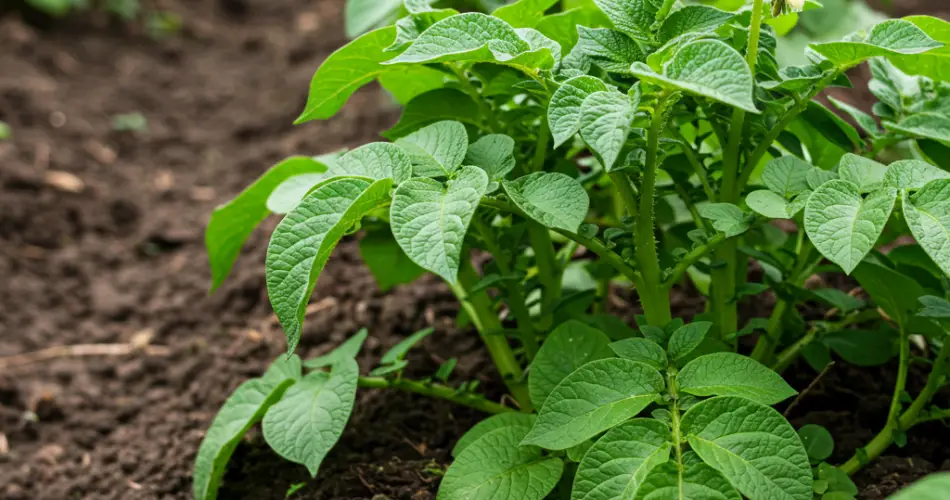Potatoes are one of the most versatile and satisfying crops to grow in your garden. Whether you have a large backyard or a modest plot, cultivating potatoes can be a rewarding experience that surprises you with its simplicity and yield. Potatoes don’t demand complex care, yet with some smart planning and basic techniques, you can harvest a bountiful crop of this beloved tuber.
Here’s a straightforward guide to growing potatoes in your garden that will delight both novice and seasoned gardeners alike.
Why Grow Potatoes at Home?
Growing your own potatoes has many benefits:
-
You control the quality—no pesticides or unwanted chemicals.
-
Freshly harvested potatoes have superior taste and texture.
-
It’s an educational and fun gardening project.
-
Potatoes are highly productive, meaning you can get a lot of food from a small space.
With the right method, you’ll be surprised at how easy and satisfying potato gardening can be.
Selecting the Right Potato Variety
Potatoes come in many varieties, each suited to different climates and uses. Here are a few common types:
-
Early varieties like ‘Yukon Gold’ or ‘Red Norland’ mature quickly (in about 70–90 days).
-
Maincrop varieties like ‘Russet’ or ‘Kennebec’ take longer but store well.
-
Specialty potatoes like fingerlings or purple potatoes add color and flavor variety.
For beginners, early or maincrop varieties are a good choice depending on your growing season length.
Preparing the Soil
Potatoes thrive in loose, well-drained soil rich in organic matter. Before planting:
-
Choose a sunny spot that receives at least 6 hours of direct sunlight daily.
-
Loosen the soil deeply to about 12 inches.
-
Amend with compost or well-rotted manure to improve fertility and drainage.
Avoid heavy clay soil or areas where water tends to pool, as soggy conditions cause rot and disease.
How to Plant Potatoes
Start with certified seed potatoes rather than store-bought ones to avoid disease.
-
Chitting (optional but recommended): Place seed potatoes in a cool, light area for 2–4 weeks to sprout small shoots.
-
Cut large seed potatoes into pieces with at least two or three eyes (sprouts) each.
-
Plant pieces about 4 inches deep, eyes facing up, and space them 12 inches apart in rows 2–3 feet apart.
-
Cover with soil and water gently.
For small gardens or beginners, growing potatoes in containers or grow bags is also an effective method.
Caring for Your Potato Plants
Potatoes need consistent care throughout their growth cycle to maximize yield.
Hilling:
As potato plants grow, periodically mound soil or mulch around the stems to cover developing tubers. This “hilling” protects potatoes from sunlight (which turns them green and toxic) and encourages more tuber formation. Hill your potatoes about every 2–3 weeks until flowering begins.
Watering:
Potatoes require regular watering, especially during tuber formation. Keep soil evenly moist but not waterlogged. A deep soak once or twice a week is usually sufficient, increasing frequency during hot, dry spells.
Fertilizing:
A balanced fertilizer rich in potassium and phosphorus benefits potatoes. Avoid excessive nitrogen, which promotes leafy growth at the expense of tubers.
Managing Pests and Diseases
Potatoes can be affected by pests like Colorado potato beetles, aphids, and wireworms. Watch plants closely and remove pests by hand or use organic insecticides if needed.
Common diseases include:
-
Late blight: Causes dark spots on leaves and rots tubers.
-
Powdery scab and scab disease: Affect tuber skin quality.
Prevent disease by:
-
Crop rotation—avoid planting potatoes in the same spot more than once every three years.
-
Using disease-free seed potatoes.
-
Keeping the garden clean of plant debris.
Harvesting Your Potatoes
Potatoes are usually ready to harvest when plants flower and begin to yellow and die back.
-
For new potatoes, harvest about 2–3 weeks after flowering begins.
-
For mature potatoes, wait until foliage has fully died back.
Gently dig around the base with a fork or spade to lift tubers without damaging them. Allow harvested potatoes to dry in a shaded, airy place for a few hours before storing.
Storage Tips
Store potatoes in a cool, dark, well-ventilated place like a basement or cellar. Avoid refrigeration, which can alter taste and texture. Properly stored, potatoes can last for several months.
Why Growing Potatoes Will Surprise You
Many gardeners are amazed at how easy it is to grow potatoes and how rewarding the harvest can be. Even small spaces or containers can yield enough potatoes for a family meal or more.
With minimal inputs—just sunlight, water, and some soil preparation—you can enjoy fresh, nutritious, homegrown potatoes that taste far better than store-bought ones.
Final Thoughts
Growing potatoes in your garden is a fulfilling and surprisingly simple endeavor. From selecting seed potatoes to careful hilling and watering, each step contributes to a healthy and productive crop. Whether you plant in traditional rows or containers, the rewards of harvesting your own potatoes are well worth the effort.
Give potato gardening a try, and you’ll be surprised by the results—not just the tubers, but the enjoyment and connection to your food that home gardening provides.



